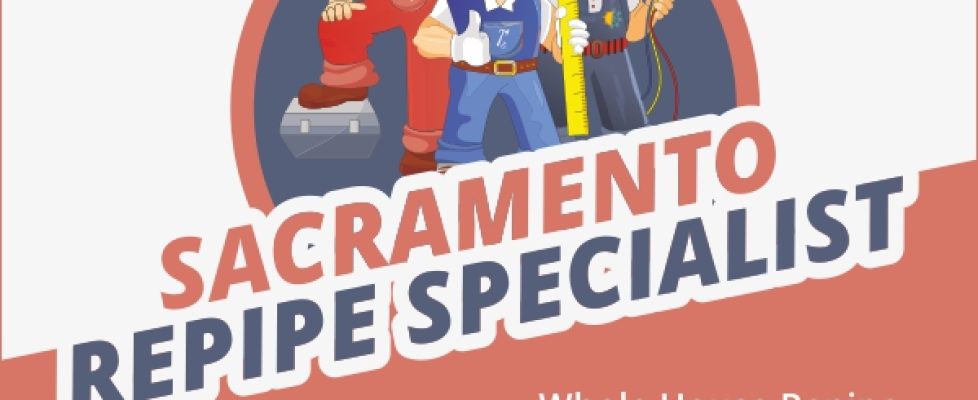Main Water Line Repair Cost: Signs & Material Comparison

Dealing with plumbing, sewer line or main water line issues can be a homeowner’s nightmare. The cost of repairing or replacing these vital plumbing components can vary significantly, depending on the extent of the damage and the specific requirements of your property. While plumbing sewer line repair costs may seem daunting, understanding the factors involved in main water line replacement and repair can help you navigate this challenging situation more effectively.
In this post, we’ll delve into the crucial aspects that influence sewer line repair cost, as well as explore options for main water line replacement and repair. By gaining insight into these processes, such as water line repair, cost, and labor, you’ll be better equipped to make informed decisions when facing such home maintenance challenges.
Recognizing Signs of Main Water Line Damage
Low Water Pressure
If you’ve noticed a significant decrease in water pressure throughout your house, it could be an indication of a damaged main water line. This is often one of the first signs homeowners notice when there’s an issue with their main water line. /// Instead of dismissing low water pressure as just a minor inconvenience, consider it as an early warning sign that something might be wrong.
A damaged main water line can lead to restricted flow, reduced pressure, and increased cost in all the fixtures throughout your home. It’s essential to address this issue promptly because prolonged low water pressure can disrupt your daily activities and indicate a more severe problem within the plumbing system, which can also increase the cost.
Wet Spots or Pooling Water Another common indicator of potential damage to the main water line is the presence of wet spots or pooling water in your yard, especially if it hasn’t rained recently. These wet areas might indicate that there’s a leak in the underground piping network supplying water to your home.
When there’s a break or crack in the main water line, escaping water may saturate the ground above it, leading to these visible signs on your property. If left unaddressed, not only will this issue impact your utility bills due to wasted water but also cause further damage over time as well as potential health hazards due to mold growth and structural instability.
Frequent Clogs and Backups Experiencing frequent clogs and backups in multiple drains within your home could also point towards problems with your main water line. When this occurs concurrently across different fixtures such as sinks, toilets, bathtubs, or showers, it suggests that there might be an underlying issue affecting the entire plumbing system rather than individual drain blockages. ///
This happens because when there’s damage or blockage in the main water line**, wastewater struggles to flow away from various parts of your home effectively which results in recurrent clogs and backups. Addressing this promptly is crucial since ignoring these symptoms can lead to extensive damage requiring costly repairs.
Comparing Lifespan of Different Pipe Materials
Copper Pipes
Copper pipes are known for their durability and can last an impressive 50-70 years, making them a popular choice for main water lines. Their resistance to corrosion and ability to withstand high pressure contribute to their long lifespan in water line repair. This makes copper pipes an excellent option for homeowners looking for a reliable and long-term solution for water line repair.
Copper pipes may require a higher initial investment, but their extended lifespan often justifies the upfront cost. They are less susceptible to leaks and fractures compared to other materials, reducing the need for frequent repairs or replacements. The longevity of copper pipes adds value to properties, offering peace of mind to homeowners regarding their water line system.
PVC Pipes
On the other hand, PVC piping presents a more budget-friendly alternative with its lower initial installation cost. However, it comes with a trade-off in terms of lifespan, typically lasting around 25-40 years. While PVC is resistant to chemical erosion and rust-free due to its plastic composition, it has a shorter life expectancy compared to copper pipes.
PVC’s affordability makes it appealing for individuals seeking cost-effective solutions; however, homeowners should consider the potential need for future replacements when opting for this material. Despite its shorter lifespan, proper maintenance can help extend the longevity of PVC pipes and minimize unexpected issues.
Galvanized Steel Pipes
Galvanized steel pipes boast an impressive lifespan that can reach up to 80 years under optimal conditions. However, they are prone to corrosion over time due to exposure to minerals in water supply systems. This susceptibility increases the likelihood of clogs and reduced water flow as mineral deposits accumulate within the pipe.
While galvanized steel offers exceptional durability against physical damage like impact or bending, its vulnerability towards internal corrosion necessitates careful consideration before selecting this material for main water lines. Homeowners should weigh the benefits of extended longevity against potential maintenance requirements associated with mineral buildup over time.
Landscaping and Additional Costs in Water Line Repairs

Excavation for Traditional Trenching
Traditional water line repair often involves excavation, leading to potential damage to the landscaping. This means additional costs may be incurred to restore the yard or garden after the repair is completed. The process of digging trenches can disrupt plants, trees, and other outdoor features, necessitating post-repair landscaping efforts.
Repairing damaged landscaping after a water line replacement or repair increases the overall project expenses as homeowners have to invest further in restoring their yards. For instance, if a large section of the yard needs reseeding or replanting due to extensive trenching, this will add significant costs on top of the initial labor costs and material expenses associated with repairing the water line.
Trenchless Methods for Minimized Landscaping Costs
In contrast to traditional trenched methods, trenchless technologies offer a more cost-effective solution. By minimizing excavation requirements through techniques such as pipe bursting or pipe lining, homeowners can reduce potential damages caused by traditional trenching methods.
Trenchless methods not only minimize disruption but also help maintain healthy root systems of trees and plants within the yard. This approach significantly reduces post-repair landscaping costs since there’s less need for extensive restoration due to minimal disturbance during water line repairs.
How Homeowners Insurance Affects Water Line Repair Costs
Limited Coverage
Homeowners insurance typically does not cover normal wear and tear on sewer line repair cost, main water line replacement, or repairs. It’s essential to understand that insurance providers consider these issues as part of the home maintenance responsibilities, similar to replacing a roof due to aging. Therefore, if your water line breaks down due to age-related deterioration, you’ll likely have to bear the full expense.
However, coverage might apply if the damage is sudden and accidental, such as from a burst pipe caused by freezing temperatures. In this scenario, your homeowners insurance may help cover the costs associated with repairing or replacing the main water line. This emphasizes the importance of reviewing your policy thoroughly and consulting with your insurance provider regarding specific coverage for water line repairs.
Policy Review Importance
Reviewing your policy can provide clarity on what types of damages are covered under normal circumstances versus those that require additional coverage or fall outside the scope of protection altogether. By understanding these nuances in your policy terms, you can make informed decisions about whether to invest in supplemental coverage for sewer and main water lines.
It’s crucial for homeowners to be proactive in seeking information about their insurance policies’ limitations. While some policies may offer limited protection against certain types of damage related to these systems, others may exclude them entirely unless specified otherwise through additional endorsements or riders.
Final Remarks
You’ve learned how to spot signs of main water line damage, compare pipe materials, consider landscaping costs, and navigate home insurance for repairs. Now, armed with this knowledge, you’re better prepared to tackle any water line issues that may arise. Remember, early detection is key, so keep an eye out for any warning signals and address them promptly to avoid more extensive (and expensive) problems down the line.
Take the time to assess your own situation and reach out to professionals if needed. By staying proactive and informed, you can save yourself from a major headache (and a major dent in your wallet) in the long run. Stay vigilant and don’t let water line troubles catch you off guard!

Frequently Asked Questions
What are the common signs of main water line damage? ///
Some common signs of main water line damage include low water pressure, unusually high water bills, damp spots in the yard, and unexplained puddles.
How does the lifespan of different pipe materials compare?
Generally, copper pipes have a lifespan of 50+ years, while PVC and PEX pipes can last for around 40-75 years. Galvanized steel pipes typically have a lifespan of 20-50 years.
Are there additional costs to consider for landscaping during water line repairs involving plumbing inspection, professional plumber, plumbers, and pvc piping?
Yes, landscaping costs during water line repairs may include restoring lawns or gardens damaged during excavation or replacing any hardscaping like pathways or driveways that were disrupted.
How does homeowner’s insurance affect water line repair costs?
Homeowner’s insurance may cover certain types of sudden and accidental damage to your main water supply lines. However, coverage varies by policy and it’s advisable to review your specific coverage with your insurance provider.
